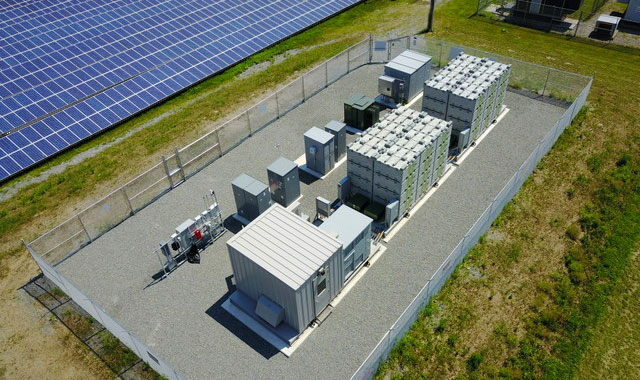Design & Modeling of Hybrid Energy Storage Enabled Microgrids for DoD Installations - Phase I
 This project optimizes energy storage implementation in Department of Defense (DoD) microgrids. Integrated modeling and design methods optimize a microgrid that can contain multiple energy storage asset types – a hybrid energy storage system (HESS) approach – in conjunction with diesel and renewable generation platforms.
This project optimizes energy storage implementation in Department of Defense (DoD) microgrids. Integrated modeling and design methods optimize a microgrid that can contain multiple energy storage asset types – a hybrid energy storage system (HESS) approach – in conjunction with diesel and renewable generation platforms.
Objectives
- Demonstrate the value of integrating optimized energy storage solutions, including multi-asset hybrid energy storage systems (HESS) within DoD microgrids
- Improve energy security performance, including critical load coverage for 24 hour and 7 day outage scenarios as a function of cost vs. similar microgrid without storage at DoD facilities
- Demonstrate controls techniques to improve revenue from energy market participation
Technologies
Storage technologies evaluated broadly covered current commercially available storage approaches and chemistries, and included ultracapacitor, lithium ion, LiFePO4, zinc hybrid cathode, sodium sulfur, and flow battery technologies.
Approach
An optimized microgrid and energy storage platform with integrated analytics and controls was utilized to evaluate potential HESS solutions. The approach combines economic optimization through the XENDEE platform and ASU’s energy security model (ESM) to evaluate energy asset portfolios, critical load coverage probability, economic performance, and asset dispatch strategies, ensuring energy security metrics are achieved while providing the lowest cost energy.
Conclusions
Primary conclusions of the study are that:
- For sites with little existing renewable generation, limited market participation options, and no ability to utilize incentives for renewables or storage investments, the integration of energy storage provides limited or no benefit economically;
- For sites where incentives can be considered, storage-enabled microgrids can:
- improve energy security over 24-hour and 168-hour outages;
- provide increased ability to meet in excess of 100% of critical load without resizing the system;
- reduce fuel use during 7-day outages at most facilities by up to 22%;
- integrate on-grid economic optimization with off-grid reliability to provide resilience with potential rapid return on investment at sites with significant market participation potential.
- Optimizing the entire microgrid, with a focus on the optimizing sizing and integration of PV generation with energy storage can provide significantly improved economics.
Project Details
- Client : Southern Research / DoD ESTCP
- Period : 2019
- Status: Complete
- Project Type : Analysis - Feasibility
- Scale : Modeling - Design
Important Points
- Optimized microgrid can reduce net cost to protect critical load by 21-62%
- Ability to provide 24 to 168 hr critical load coverage can be improved with optimized storage-enabled microgrid
- Proper microgrid design can reduce annual energy costs by over 15%
Recognition
- ESTCP Project of the Year 2020 for Installation Energy and Water
